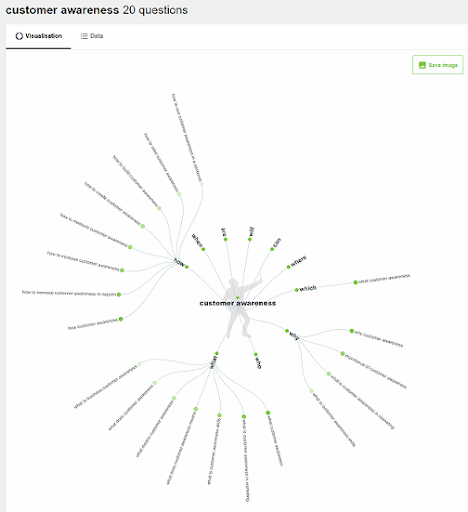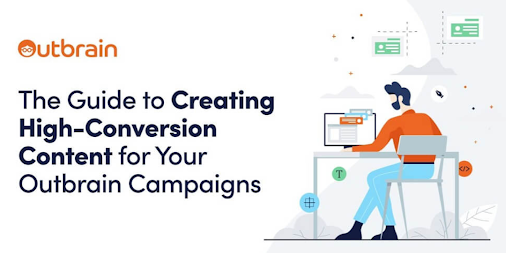The 5 Stages of Customer Awareness and How to Create Content For Each

When it comes to marketing, the number five seems to pop up a lot.
For example, you’ve got the 5 Ps of Marketing, otherwise known as the Marketing Mix.
According to Harvard Business Review, there are 5 marketing “superpowers”.
Want to know the secret to better marketing? It just so happens there are 5 Ts that give you consumer-centric insights.
And of course, you’ve got 5 stages of customer awareness, as outlined by Eugene Schwartz in his copywriting classic “Breakthrough Advertising”.
- Unaware
- Problem Aware
- Solution Aware
- Product Aware
- Most Aware
But what does this have to do with content marketing? It’s connected to the way people make purchase decisions.
Beyond simple transactions or impulse buys, consumers don’t typically purchase in a binary, off/on kind of way.
More often than not, customers follow a “journey” of awareness. It may start from a point where the customer is not yet even aware that they have a problem or need, to acknowledging their pain point, their desire for a solution, and getting to know your product or brand. With this awareness, they can begin the consideration stage – also called middle-of-funnel – of deciding whether or not your product is right for them. At each stage of that awareness journey, your content’s goal is to move your prospect further along that journey, from unaware to most aware.
When your content does this, you’re not just nudging them closer to a buying decision. You’re also:
- Building a relationship with your audience long before they become customers
- Positioning yourself as a trustworthy source of assistance and authority
- Pre-positioning your product as the logical solution to that person’s problem
A “Hedgy” Look At The Awareness Journey
Take this scenario: you’ve just moved into a house with a front-yard hedge that wouldn’t look out of place on “Love Your Garden”. Every morning, you emerge from the house and pause for a moment to admire your hedge before heading off to work.
At first, you’re blissfully ignorant that the hedge is growing untidier every day. But after a month, you notice straggly twigs that mar the hedge’s once-symmetrical shape. And for a house-proud person like you, this is unacceptable.
The next day, you jump online to find out the best ways to look after your shrubbish pride and joy…
…and uncover a plethora of options, from five different types of pruning shears to electric hedge trimmers
But which one’s the best for you?
After shelving the problem for a week, you resume your hunt, stumbling across an in-depth blog post that reviews the major tools against different hedge conditions.
For your hedge, it seems the Shape-Sculptor 5000 is the obvious choice. A visit to the Shape-Sculptor website, where you watch a couple of videos, confirms this.
The trouble is, it’s expensive. You sign up for their email list in case they have promotions.
Three weeks later, having read emails that explore “5 tips to have your hedge in tip-top shape” and “Shape-Sculptor 5000 vs Power-Hedge 3.0: Ultimate Trimmer Showdown”, a 30% off email lands in your inbox.
Sold!
* * *
That’s one example of how people move naturally through the awareness spectrum.
The question remains: how do you help potential customers pass through each stage? What kind of content moves them not just toward the next level of awareness, but a decision in your favor?
Let’s go through the 5 stages of customer awareness and explore how to target your audience with stage-specific content.
Unaware
“Unaware” folk are just that: not aware they even have a problem, let alone knowing anything about potential solutions. By sheer volume, they’re the largest segment of the awareness spectrum, but they’re also the most challenging to market to.
How do you market to someone who doesn’t realize they have a problem or need?
The first time they bump into your content provides an opportunity to shift them out of their “unawareness”. This first contact might be them finding you on social media, seeing one of your ads, or even stumbling across one of your pages through search results.
Pro tip: Make the effort to pinpoint how people first find you, as you can promote unaware-based content through these channels.
For unaware audiences, the first thing to do is show them they have a problem or pain point. Not in a manufactured or false sense, but in a way that educates and enlightens them. Let’s take a look at the type of content that is most suitable and effective.
Content for the “unaware” phase of customer awareness
In this stage, it’s time to educate prospects on the problem they have yet to acknowledge or accept. The format is less important than theme and direction. Having said that, it makes sense to research which channels and content formats your audience prefers, and cater to them where possible.
Short videos and other “snackable content” that walk through a problem are ideal, as your audience isn’t yet at the point where they’re ready to dive in to discover more.
For example, a blog post about how office workers can prevent back pain is a great way to ease the audience into the idea that they may have a problem that needs fixing. Here’s another example: a video ad by Grammarly, online writing assistant software, which highlights a common office problem (how to communicate with your boss) in a fun and engaging way.
Problem aware
Your prospect has woken up to the fact they’ve got a problem. But this is only the beginning of their journey.
They’ve got questions. A lot of questions.
The obvious thing to do now is to explore the problem, searching on the internet for things like…
- What is it exactly?
- Where did it come from?
- Are there effects I’m not aware of?
- Do others have the same problem?
- What can I do to fix it?
Like 99% of us, your prospect’s likely to start with Google or other broad search avenues, but that doesn’t mean they’ll stop there.
Social media is an obvious destination for problem-oriented research. YouTube and Reddit are also potential treasure troves of information. Niche forums about the subject are another common searching ground.
Content for the “problem-aware” phase of customer awareness
When deciding which content to create for the problem-centric stage of customer awareness, the best place to start is to find out what people with the problem you solve are talking about.
You can do this by researching the web, and jumping on forums and social media groups where relevant conversations are happening. Search listening tools like Semrush and Answer the Public are very helpful for exploring questions and keywords people are searching for.

Once you’ve listened in and established the top questions consumers are asking, create content that does two things:
- Identifies and focuses on the problem: Consumers want to know more about the problem, and they want to feel that they are understood. If your content doesn’t have them nodding, they’ll just move on
- Start to give answers to the problem. It’s not yet time to go into “Product X is the answer”, but instead, create content that addresses their initial questions in a helpful way.
If prospects find valuable content that’s shedding light on their problem, they’ll be happy to learn more from the same source. This should be the aim during the problem-aware phase.
Solution aware
The good news is your prospect now knows they have a problem or need, and they’re starting to get answers… including what they might need to fix it.
The bad news is that they still know practically nothing about you or what you offer.
Here’s the silver lining: at this stage, they’re looking for ways to sort things out. In other words, they’re becoming solution-aware, exploring potential fixes for their problem or desire.
This is when your prospect starts to get “warmer”. They may not be at the point of pulling out their wallets, but they’re edging closer.
And it’s at this stage that you can subtly slide your product or service under their noses.
Content for the “solution-aware” phase of customer awareness
At this stage, the audience is looking for a solution that works. So you need to provide proof that your offering can solve their problem. Case studies, success stories, testimonials, and influencer reviews are ideal vehicles for showing your reader just how well your solution does that.
Take a look at this testimonial video by Sephora, which tells the ‘beauty story’ of Luiza, a 28-year-old Romanian woman who loves makeup and explains why:
Product aware
Your prospect is now aware of the options and is exploring them all, including yours.
Now’s the time to show them why your product is the one to pay attention to. And it’s where your lead-up work, taking them from Unaware to Problem Aware to Solution Aware pays off.
If they’ve come along the journey with you, you’re someone they can trust. Now that you’ve got their ear, you want to do two things:
- Show your prospect how their problem is solved with your product
- Make your product shine when it comes to the competition
At this point, you’re showcasing your product and giving them reasons to choose yours, first and foremost.
However, this isn’t a reason to go into “pitch mode”. Just as you’ve been doing with your content in earlier stages of awareness, make your content valuable and engaging.
You can also introduce future pacing into the mix by showing them how to use your solution (and how easy, effective, and complete it would be).
Content for the “product-aware” phase of customer awareness
To satisfy those twin goals for Product Aware prospects, you can deploy an array of different content. Product comparisons and reviews give readers an in-depth look at how your product stacks up against the rest. How-to guides, demos, and product walkthroughs can show your reader exactly what your product will do for them.
For example, Outbrain promoted an e-book explaining how to create content for native campaigns. Via a dedicated landing page, interested prospects can download the guide and learn how Outbrain’s product can be leveraged to get results.

Most aware
Congratulations! You’ve taken your prospect from not even knowing they had a problem to the brink of becoming a customer.
They know who you are, they know your product is perfect for them, but they just need a final nudge to pull out the credit card.
In that sense, they don’t need the same content as people in previous phases. In fact, you may not use content at all. Incentives that encourage them to buy, like free shipping or bonuses, can give your prospects that last reason to choose your offering.
Content for the “most-aware” phase of customer awareness
It’s time to give your prospect a little push over the fence. Use incentives, discounts, and deals to get them over the line. For example, you could provide a coupon code, buy-one-get-one-free offer, an extra month’s subscription, discounted or free shipping, or other promotional tactics.
If you do want to create content for this crowd, research the objections or obstacles to purchase that may be causing potential buyers to hesitate. Then write articles, create videos, or post FAQs that address those last-minute heebie-jeebies.
This video ad by Monday.com is fast, funny, and gets down to the nitty-gritty of the product features and details, and does a good job of convincing the viewer to finally switch from spreadsheets.
BONUS! Repeat customers
After doing the hard work, you want your Most Aware customers to become repeat buyers, fans, and brand advocates.
There’s a good reason for that. Studies have shown that repeat customers spend two-thirds more than new customers. So you definitely want to keep your relationship with existing customers going strong!
The incentives used for Most Aware prospects, such as discounts or special deals, still work at this stage, but you also want to keep prospects engaged and curious about your product or brand. That’s where content comes back into the picture. For repeat customers, it’s important to show how to get the most from your products, introduce them to different features they might not know about, and also offer exclusive deals or content for being a loyal shopper.
Content for the “keep them coming back” stage
When creating content for customer retention, you’ve got more than a few options:
- Advanced guides and webinars are a great way to educate your customer so they stick with you
- Loyalty or reward programs that offer exclusive content (along with other advantages, such as discounts)
- Email marketing, segmented for different customers, is the perfect vehicle to deliver your content (and also works well in earlier phases, like Product and Most Aware)
Where Does Your Content Fit?
Anyone can write a blog post or create a video that vaguely talks about what their prospects want. With a little research, you can hit “pain points”, wax lyrical about benefits, or throw a special offer out to your email list.
It’s another thing to create content that matches the different stages of awareness and speaks directly to the prospects’ needs and problems at each stage, then actively move them towards a decision to buy your product.
Most importantly, awareness-based content isn’t about hard selling or gimmicky techniques.
It’s about:
- Connecting with your audience at the right stage
- Helping them understand what they need to know right there and then
- Showing how your product solves their problem once they’re at that point
Is your content doing that?


